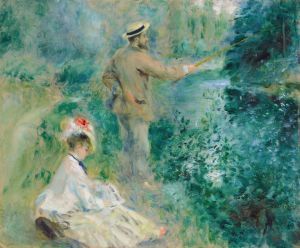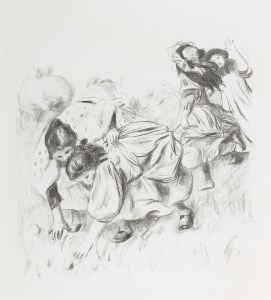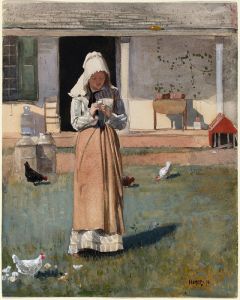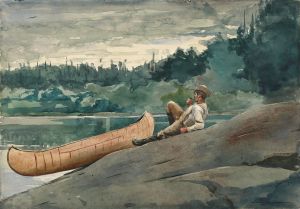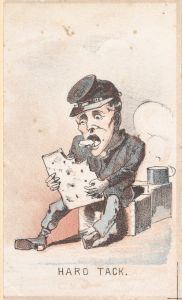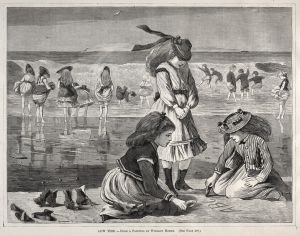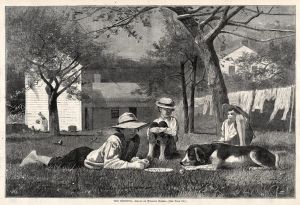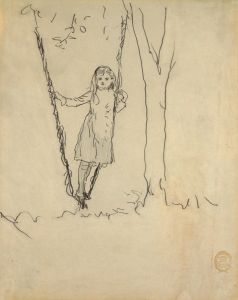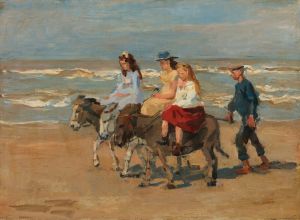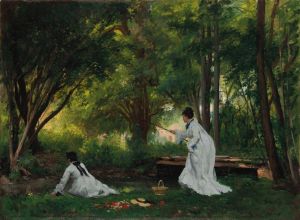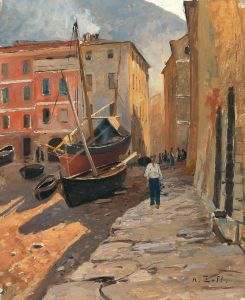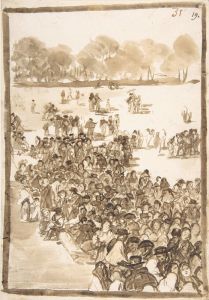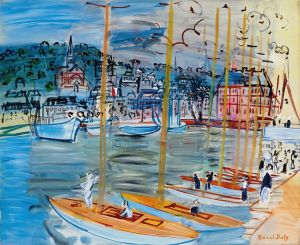
Bathing at Long Branch, – ‘Oh, Ain’t it Cold!’
A hand-painted replica of Winslow Homer’s masterpiece Bathing at Long Branch, – ‘Oh, Ain’t it Cold!’, meticulously crafted by professional artists to capture the true essence of the original. Each piece is created with museum-quality canvas and rare mineral pigments, carefully painted by experienced artists with delicate brushstrokes and rich, layered colors to perfectly recreate the texture of the original artwork. Unlike machine-printed reproductions, this hand-painted version brings the painting to life, infused with the artist’s emotions and skill in every stroke. Whether for personal collection or home decoration, it instantly elevates the artistic atmosphere of any space.
Bathing at Long Branch, – ‘Oh, Ain’t it Cold!’ is a watercolor painting created by the American artist Winslow Homer in 1869. Homer, known for his depictions of American life and landscapes, was a prominent figure in 19th-century art and is often associated with the Realist movement. This particular work reflects his interest in capturing scenes of leisure and recreation, which were common themes in his early career.
The painting portrays a group of women wading into the ocean at Long Branch, a popular seaside resort in New Jersey during the 19th century. Long Branch was a fashionable destination for vacationers, particularly from urban centers like New York City, and it attracted a mix of middle- and upper-class visitors. The scene depicted in the painting captures the social and cultural atmosphere of the time, as seaside bathing became a popular pastime in the United States.
Homer's use of watercolor in this piece demonstrates his skill in the medium, which he increasingly explored during this period. The work is characterized by its loose, fluid brushstrokes and the artist's ability to convey the movement of water and the figures within it. The title, "Oh, Ain’t it Cold!," adds a humorous and relatable touch, suggesting the chilly experience of entering the ocean, a sentiment many viewers of the time would have recognized.
This painting is part of a broader series of works by Homer that focus on seaside activities and the growing popularity of beach culture in the post-Civil War United States. These works often highlight the interplay between humans and nature, as well as the social dynamics of leisure spaces. Homer’s ability to capture such moments with authenticity and charm contributed to his reputation as one of America’s leading artists.
The current location of the painting is not widely documented, and it is unclear whether it resides in a public collection or remains in private hands. However, it is frequently referenced in discussions of Homer’s early watercolors and his contributions to American art.
This artwork exemplifies Homer’s transition from his earlier career as an illustrator to his later focus on painting, showcasing his evolving style and thematic interests. It remains a notable example of his work during the late 1860s.





